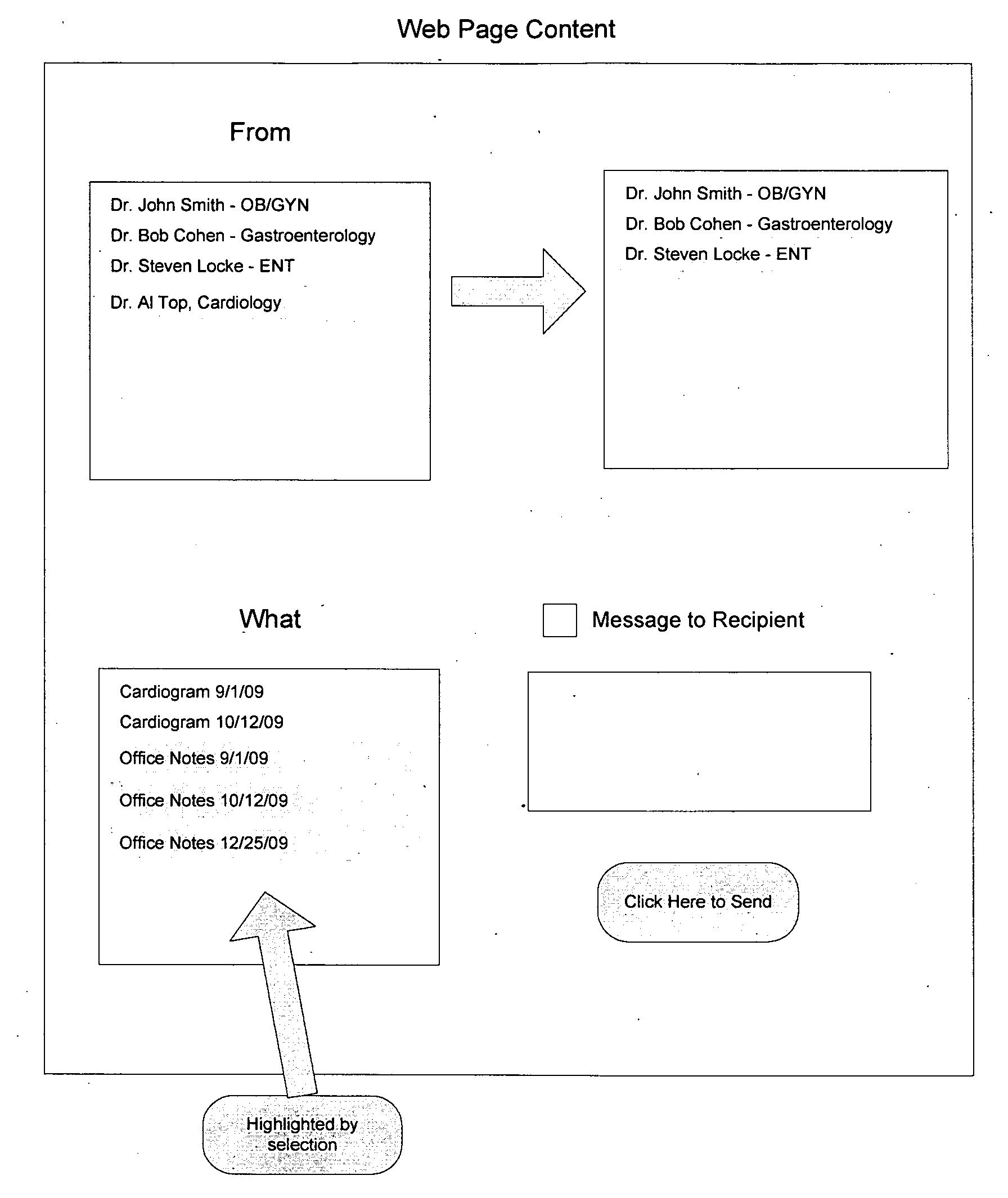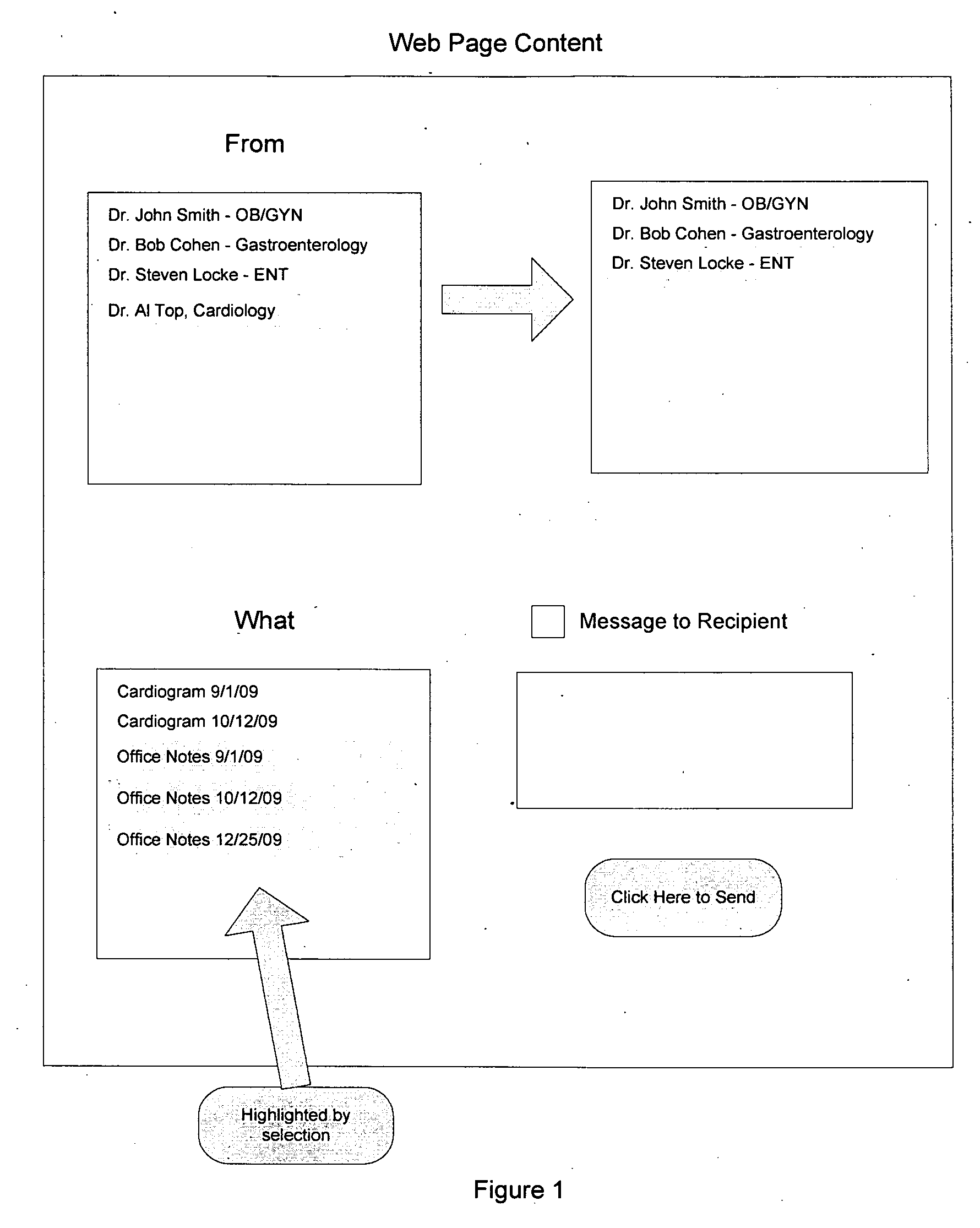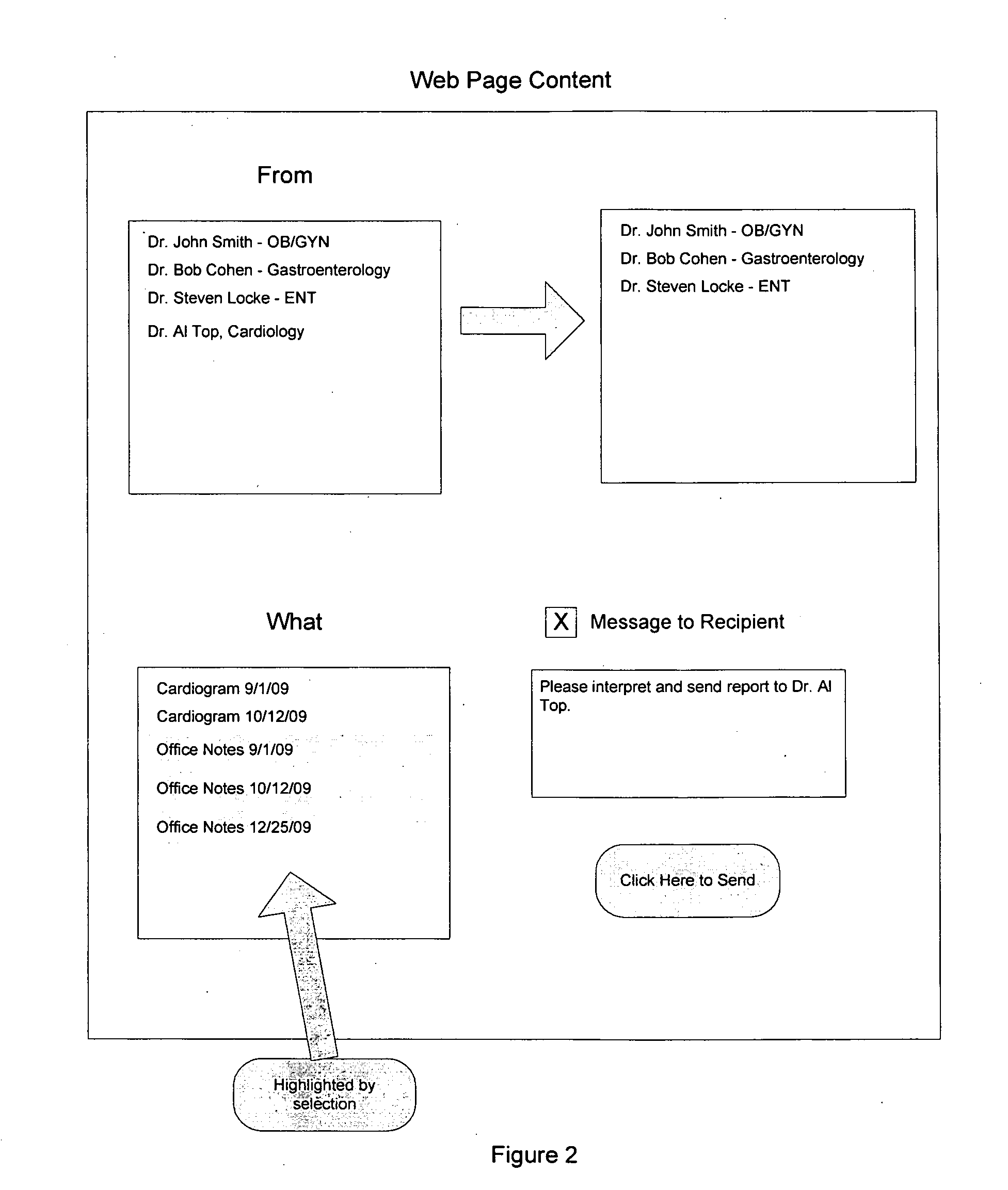These EMR and related systems are typically provider-focused; some do not provide any direct patient access, and those that do are typically still provider-centric, and often deliver patient access to only a small subset of information contained within the
system—for example, allowing patients to check financial-information (account balances, bills, insurance claims, etc.) but not to access their own detailed medical records.
Medical-
records management systems designed for patients—that is, for people who, during a specific usage of a system are acting from the vantage point of receiving healthcare offerings rather than acting from a vantage point of providing them (although clearly physicians are also at times patients of other physicians)—have also not achieved widespread acceptance.
The requirement by online
medical record management services that users store medical records online—in repositories that are, of course, ultimately possessed by outside parties that host the data—has been disconcerting enough for many people from a security and privacy standpoint to discourage the systems' wide adoption.
Likewise, systems that store
medical information on users' computers have been found inadequate as records are often not available at times when users need them—for example, if a user arrives at a specialist-doctor appointment and finds that records that were supposed to have been sent from her general practitioner were never received by the specialist, if the records are stored in the user's
home computer the user will likely be unable to access the records while in the doctor's office and may need to reschedule her appointment.
As a result, obtaining and managing medical records remains a cumbersome process for patients.
While talk of inter-connected medical records sharing systems has gone on for quite some time, to date such automated communication is essentially non-existent outside of affiliated entities or parties utilizing identical EMR systems.
Even within the entities, control over the data belongs to the providers—patients cannot login and control personal information about their own health.
Furthermore, some people may not wish to ever have full sharing of their
medical information between all parties—either for security, privacy, or other reasons; many folks may wish to have better control over who gets to see specifically which medical information about them.
Providing medical records, is, therefore, also cumbersome, inefficient, and expensive for providers as well.
Since the law in most American jurisdictions and other Western nations requires medical providers to provide such records to patients—and the fees charges to patients often do not account for the true total cost of providing them—it costs them financially as well.
Time and money is also wasted looking for records that may have been moved, transitioned to archives, or non-existent to begin with (e.g., a patient thinks MRI results were sent to Dr.
Different EMRs do not cross communicate, and records not yet stored in EMRs are often not available electronically.
Providers have been wary to provide easier access to records due to concerns about HIPAA protections etc; as such, the current process remains inefficient and error-prone.
Another problem people face today is that, after some period of time, providers may erase medical records or store them in some difficult-to-access archive.
Since old medical records can often be very useful in treating a condition, this is problematic.
Furthermore, today, when patients need a particular
medical test performed (for example, an MRI of the
lumbar spine) the interpretation of test results is often forced on them, meaning that the providers of the actual imaging services—and not the patient—choose the provider to interpret the results and issue a formal report.
This denial of choice in
medical care is disturbing not only from a health care perspective, but also often results in unwanted charges to the patient.
Worse yet, a facility considered ‘in network’ by an insurance company might utilize an ‘out of network’ doctors for these readings—without the patients'
prior authorization, resulting in additional costs, aggravation, and / or paperwork nightmares—for the patient.
At times, the current healthcare model may also contribute to medical errors as physicians who receive large incomes from
medical imaging and / or testing facilities have strong incentives not to criticize the results of a test—for example, to state that an MRI was performed improperly or produced an unclear images and must be redone.
This monopolistic system is bad for people seeking healthcare—both medically and financially.
Furthermore, today there is no way to search medical records across multiple systems from a single portal.
So, if a person wants to search for all references to his
blood pressure in all doctor records from the past ten years, for example, there is no way to do it.
Furthermore any notes that a patient wants to provide after a visit with a provider may not be included in any official medical records—despite their value in diagnosing and treating both the particular patient in question as well as others.
For example, if the patient has an adverse reaction to a medication that is not bad enough for her to call a doctor he may not report the reaction and that information may not end up in the patient's medical records.
Likewise, if a patient finds a particular
drug to be less than effective (e.g., for fighting the flu) but recovers from a condition (e.g., the flu) through natural healing and time, she may never report it either.
This means that valuable information from the person who knows the patient best may never make it into the medical records.
Patients being treated for a particular ailment also have no automated or easy way to find others with the same ailment—so discussions about doctors and treatments is not simple—they need to manually locate people—perhaps by searching on
the Internet and hoping that the information that they find is real, from real patients who really have a similar condition, and not from people who may either be friends and family of a provider, or, on the other hand, someone with a gripe against a provider.
Additionally, medical records and dental records are almost never shared between doctors and dentists—also adversely impacting
medical care.
 Login to View More
Login to View More  Login to View More
Login to View More 


